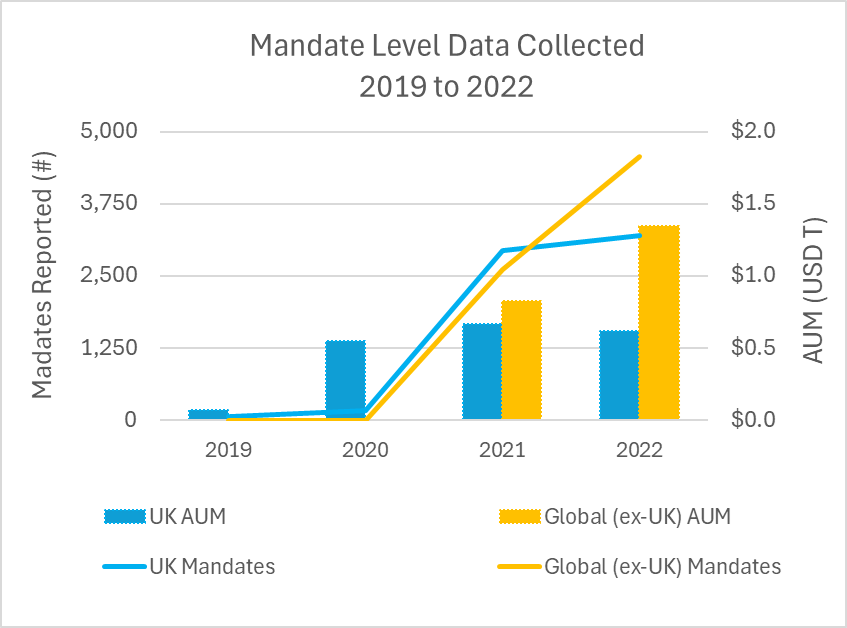Peer Intelligence | Spring 2024
Bps and Bites
Beyond asset classes: mandate level data on over 8,000 mandates now represents USD 2 trillion of the assets in CEM’s global investment benchmarking database.
By Chris Flynn
Over the past five years, the way in which CEM collects investment data from our Investment Benchmarking Subscription participants has evolved. Leveraging widespread adoption of CTI (Cost Transparency Initiative) templates in the UK, we have expanded our model to work with portfolios at the individual manager mandate level within asset classes. Participants in our DC Subscription have always had an ability to work with data at a similar (i.e. option) level.
After piloting with a limited number of clients five years ago, most UK funds are now providing mandate level data by individual manager, which we aggregate to the asset class level.
In 2021, the ability to provide mandate level data was extended to all funds, regardless of geography. Subscribers have been gradually taking advantage of this opportunity and, in 2022, we collected data on over 8,000 individual mandates. Anecdotally, we are already seeing this number rising significantly for the 2023 data year.

While UK funds took the lead in reporting on a mandate basis, the growing number of funds globally reporting mandates has now surpassed the UK funds in scale. In 2022, the total AUM reported on the mandate basis globally (ex-UK constituting USD 1.3 trillion across 4,500+ mandates) surpassed the investments reported by mandates in the UK (USD 0.6 trillion across 3,500+ mandates). This captures all mandates provided directly to CEM. If we also include the number of mandates within asset classes, our total number of comparable mandates rises to over 30,000, which covers majority of the CEM database. Overall, the mandate level database has become more global and a material portion of the total CEM database.
This has three major benefits for funds who work with CEM:
1. Deeper and more actionable insights. Mandate level reporting affords funds the ability to see an attribution of differences in both cost and returns down to the mandate level. This attribution is not reliant on the proportion of peers reporting mandates – it is simply an extension of the analysis using your own data.
2. Less effort in data provision. For many funds, their data is more readily available at a mandate level, and in some cases their asset managers and custodians can provide this data directly to CEM. Reporting at a mandate level is not an ‘all-or-none’ decision; it’s possible to report some assets at the asset class level, and others at the mandate level.
3. Enhanced data validation. Mandate level data allows CEM to use manager deal terms, where provided, to estimate the manager base fees for any mandates where fees are missing or require validation. This can be particularly helpful as our analysts contextualize the material you provide.
If you would like to connect with CEM's Research Team, please click here.
Peer Intelligence | Spring 2024
